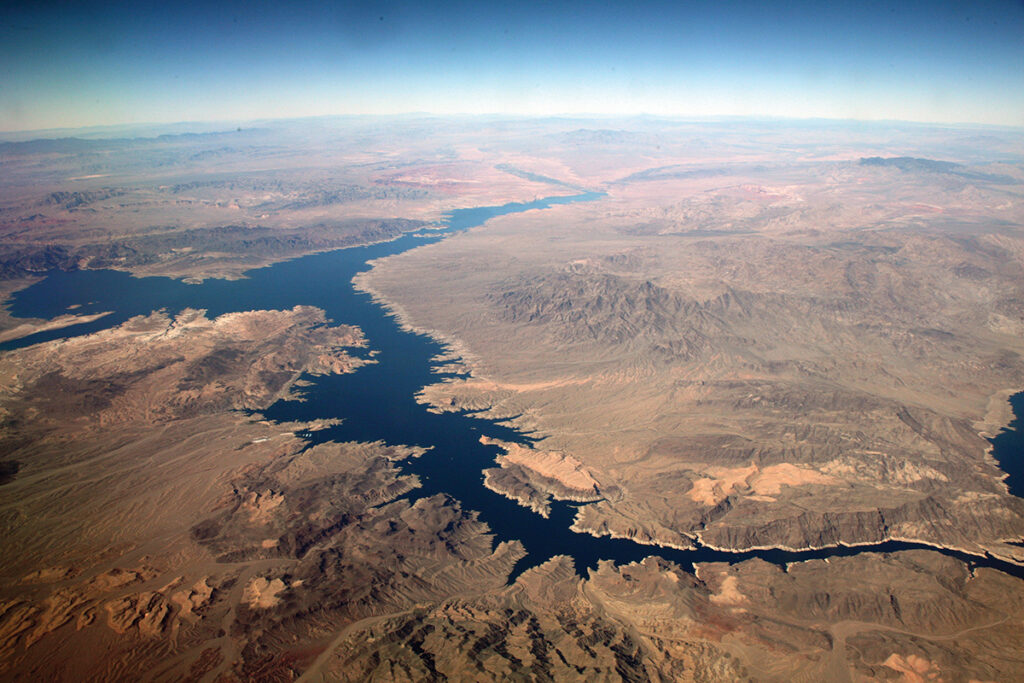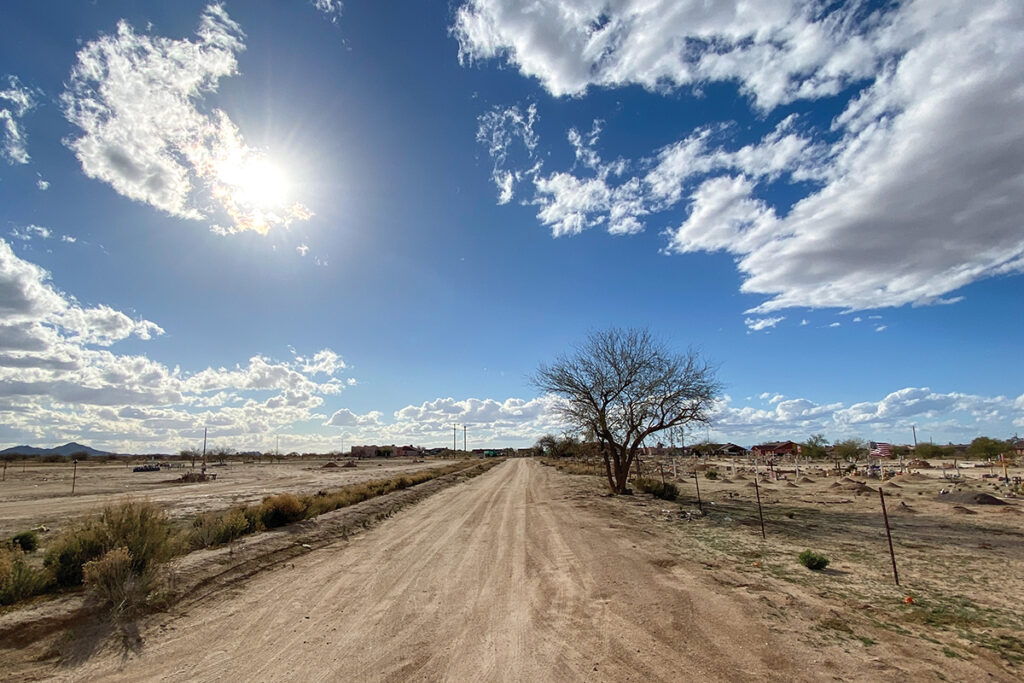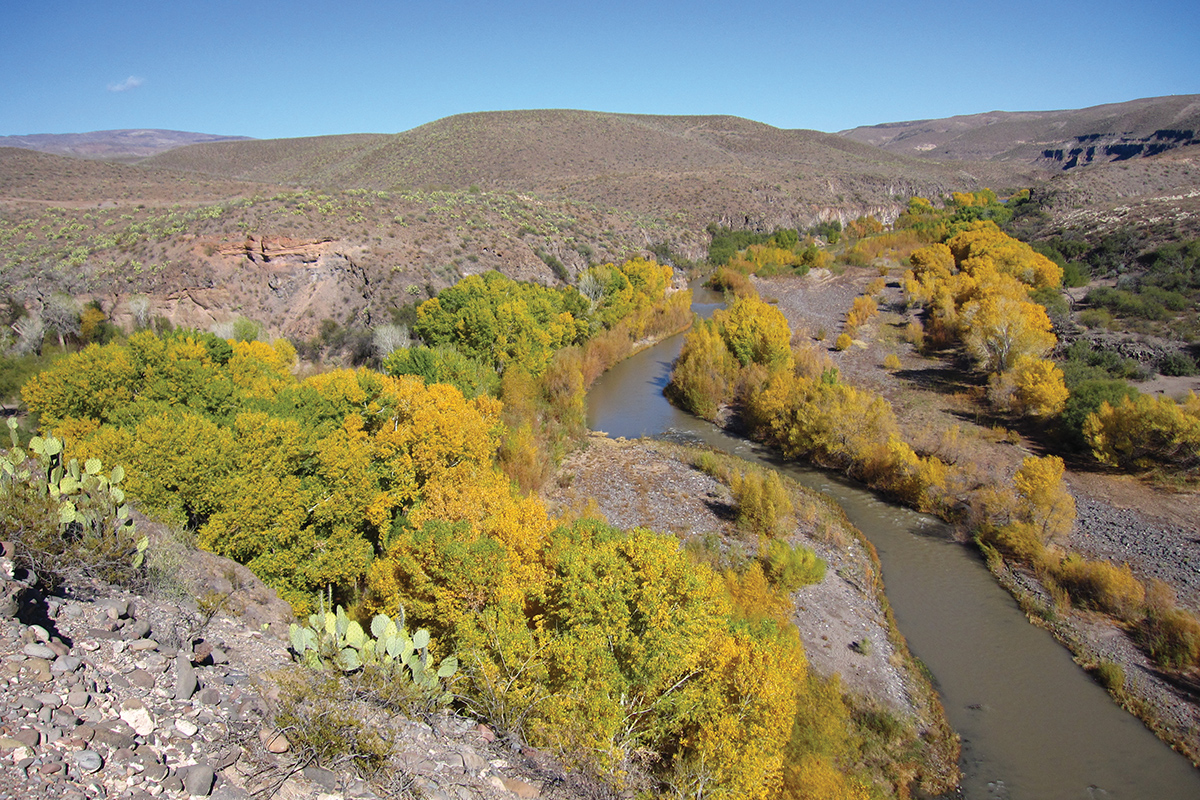This special issue of PERC Reports explores the West’s water crisis and how markets can address today’s shortages. Read the full issue.
As the water-starved West grapples with historic drought conditions, water managers are scrambling to reduce withdrawals. In Southern California, for example, the Metropolitan Water District—which supplies municipal water to Los Angeles and other cities throughout the region—has staved off cuts by leasing senior water rights from nearby farmers. Under the arrangement, water that would have gone to the Palo Verde and Imperial Irrigation Districts is instead stored in Lake Mead to supply cities in the region.
In return, the districts have netted hundreds of millions of dollars. The districts’ ability to choose whether to use their entire water allocations for agriculture or to lease or sell those rights to others enables them to capture the full value of their water rights. It also injects an element of flexibility into an otherwise rigid water rights system.
Such arrangements, however, are often out of reach for another group of senior water users in the basin: the Native American tribes who are entitled to some of the river’s oldest water rights. Because most tribes have never had their water rights legally quantified, their rights cannot be enforced, let alone leased. As a result, tribes forgo billions of dollars annually in potential leasing revenue and lack influence over important basin-wide water policy decisions. Meanwhile, the basin has one less tool with which to address water shortages.
The high stakes of inaction underscore the need for water markets that encourage conservation. Yet federal laws and policies systematically exclude Native American tribes from participating in such markets. Not only are these policies inequitable, but they also perpetuate inefficient water use and severely hamstring the collective capacity of the basin’s 40 million residents to adapt to increasing water scarcity.
Inequitable Water Policies
The 29 federally recognized tribes in the Colorado River Basin hold rights to a combined 3.6 million acre-feet—roughly 25 percent of the river’s annual flow. With some of the most extensive and senior water rights in the West, tribes should have immense influence over water use. Yet many struggle to capture the benefits of their valuable water rights due to federal restrictions on marketing their water. In addition, capital constraints and a chronic lack of water infrastructure to connect reservations to remote water sources mean that many tribes have water rights that they cannot physically access or use.
Because most tribes have never had their water rights legally quantified, their rights cannot be enforced, let alone leased. As a result, tribes forgo billions of dollars annually in potential leasing revenue.
Nearly half of reservation households lack basic drinking water connections, and tribes use only a fraction of their deeded rights, mostly for agriculture, while the remainder flows downstream to be used by other appropriators. Marketing tribal water rights could provide much-needed capital for water infrastructure while also providing relief for off-reservation water users during times of extreme drought.
As Amelia Flores, chairwoman of the Colorado River Indian Tribes, stated in her 2021 congressional testimony, the ability to lease water rights would “provide our tribe with the financial resources to fund improvements to the [tribe’s] irrigation project so that our water use may become efficient. Greater efficiency on our reservation means we can do more to help the river.”
But tribes such as hers cannot market their water rights off-reservation without congressional authorization. In general, tribes cannot sell their water rights, and most cannot lease their water rights for off-reservation uses without federal approval. The few tribes who can lease secured authorization to do so as part of congressionally enacted settlements that defined their water rights in the first place.
Tribal water settlements often take decades to negotiate between tribes and neighboring water users. Tribes have to retroactively quantify their rights in fully appropriated basins where reservation water access is already limited. Because all negotiating parties must agree to the terms that ultimately formalize tribes’ water rights, other parties like cities and irrigation districts can influence whether and how tribes are allowed to market their water.

Several agreements permit leases with only the entities who were party to the settlements themselves. The Salt River Indian Community’s settlement limits off-reservation water marketing to 99-year leases with Arizona cities that participated in the negotiation. Others restrict leases to certain parties, water sources, and geographical locations. For instance, most Arizona settlements only authorize tribes to lease their rights to Central Arizona Project water—sourced from the system of canals that deliver Colorado River water to the center of the state—and restrict such leases to water users in a handful of counties.
The layers of restrictions on tribal water marketing deprive tribes of the same ability that other water rights holders have to generate revenues through water leasing. As of 2012, Colorado River Basin tribes were potentially forgoing as much as $1.6 billion in annual leasing revenues that could have been reinvested in reservation economies—an amount equal to $8,000 per tribal resident.
High Costs of Restrictions
The high costs of leasing restrictions are especially evident in the Lower Colorado River Basin. A 1963 Supreme Court ruling, Arizona v. California, gave tribes on five reservations located along the mainstem of the Colorado River the senior-most rights to 952,000 acre-feet of the river’s flow. The magnitude of the tribes’ water rights should be an economic windfall. They are located just upstream from thirsty cities such as Phoenix and Los Angeles, which currently pay millions of dollars a year to lease similar high-priority water rights from Imperial and Palo Verde farmers.
Restrictions on tribal water marketing are inequitable and perpetuate inefficiencies at a time when conservation is especially critical.
The ruling, however, stipulated that water use must be confined to reservations, and to date, none of the five tribes have been authorized by Congress to lease water. There have been some creative workarounds. The Colorado River Indian Tribes entered into a forbearance agreement, technically not a lease, under which it banked water in Lake Mead for three years in exchange for $150 million, raising water levels by three feet. But such one-off agreements take years to negotiate.
Legislation authorizing all tribes to lease their water rights could alleviate substantial pain as the West gets drier and water demand continues to grow. Tribes would be able to generate much-needed leasing revenues to reinvest in reservation economies. Further, while tribes do not currently use all of their water rights, they plan to eventually, most likely by expanding irrigated agriculture. Rather than relying on tribes’ unused water, off-reservation parties could proactively shore up their water security through legally enforceable agreements with tribes. But without authorization to lease, tribes lack both the incentive and capital to conserve water. Meanwhile, some off-reservation water users in Arizona and Nevada—the most junior users in the lower basin—are facing mandatory curtailments during the current drought but have few options to lease water.
Fairness and Efficiency
The Gila River Indian Community in Arizona offers an example of what could be if leasing were an option for more tribes. The tribe settled its water rights in 2004, and it is unencumbered by many of the restrictions facing other tribes. Since then, the tribe has entered several short- and long-term leasing agreements with Arizona cities, generating hundreds of millions of dollars in leasing revenues by storing nearly 600,000 acre-feet in Lake Mead. It has also partnered with the Salt River Project to store its unused water underground and then lease its groundwater storage credits to municipal water users in Arizona.

Moreover, since settling its water rights, the Gila River Indian Community has been diligently constructing irrigation infrastructure necessary to restore reservation agriculture. With the ability to both use and lease portions of its 600,000 acre-foot entitlement, the tribe has assumed a leadership role in lower basin efforts to reduce Colorado River water use. States’ lackluster commitments to shore up Lake Mead this past summer prompted the tribe to withdraw from water conservation agreements, thereby raising basin-wide shortage risks. Only after California water agencies committed to conservation measures did the tribe recommit to leasing 750,000 acre-feet of its water rights to the federal government over the next three years, to be stored in Lake Mead. “Using our water resources as leverage,” Gila River Indian Community Governor Steven Roe Lewis said on Marketplace, “that was an important strategic move to really advance a plan.”
Broader Implications
Restrictions on tribal water marketing are inequitable and perpetuate inefficiencies at a time when conservation is especially critical. Such policies exclude tribes from important water policy decisions and deprive them of the same choices that other water rights holders have.
Arizona Senators Mark Kelly and Kyrsten Sinema have recently proposed legislation authorizing the Colorado River Indian Tribes to market their water rights. “They can conserve more water, they can lease more water, and they will have the resources to become more resilient and water efficient,” Sen. Kelly recently remarked. The legislation is a positive development—but it only applies to one tribe. A blanket legislative authorization to lease water off-reservation would be a crucial step toward restoring Native American sovereignty over tribal resources while also bolstering the Colorado River Basin’s adaptive capacity to drought.




